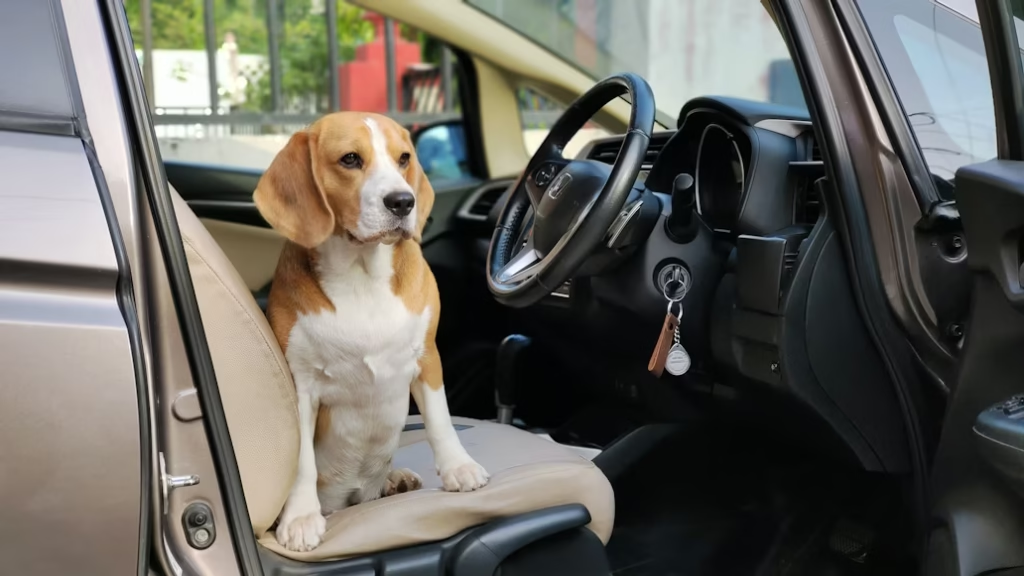There’s something magical about hitting the open road with your furry best friend riding shotgun. The joy of sharing new experiences, exploring unfamiliar places, and creating memories together makes pet-friendly travel incredibly rewarding. But here’s the thing, if you’ve never done it before, taking your pet on a road trip involves way more planning than you might think. It’s not just about tossing a leash in the car and heading out. Your pet’s comfort, safety, and temperament all play huge roles in whether your adventure becomes a cherished memory or a stressful ordeal. Whether you’re planning a quick weekend escape or a major cross-country expedition, getting the details right upfront will make all the difference. The key? Thoughtful preparation that transforms potential headaches into opportunities for bonding and discovery with your four-legged travel buddy.
Pre-Trip Veterinary Preparation and Health Considerations
Your first stop before any pet road trip should be your veterinarian’s office, not the highway. A thorough check-up ensures your pet is healthy enough for travel and can handle the physical demands of long car rides. Your vet will make sure vaccinations are current and provide the documentation you’ll need for certain hotels or if you’re crossing state lines. If your pet gets anxious or experiences motion sickness, now’s the time to talk about it.
Essential Packing List for Pet Travel Success
A well-organized packing list saves you from panicking at rest stops when you realize you’ve forgotten something crucial. Start with food, pack enough of your pet’s regular brand for the entire trip, plus a few extra days’ worth as backup. Switching foods suddenly can trigger digestive issues that’ll make everyone miserable. You’ll want collapsible bowls for food and water, plus a gallon of water from home to help ease the transition to unfamiliar water sources. Stock up on waste bags because being a responsible pet owner doesn’t take a vacation. Your list should include leashes, harnesses, grooming supplies, any medications your pet takes, and a basic pet first-aid kit. Comfort items matter tremendously; favorite toys, blankets, or bedding with familiar scents can help anxious pets feel more secure in strange places. Even if your pet usually rides free in the car, consider bringing a portable carrier or crate for hotel stays and unexpected situations. Planning to travel through areas where professional grooming might be needed? It’s smart to schedule appointments ahead of time, like booking dog groomers in Bluffton, SC if your route takes you through that area, ensuring your pet stays comfortable and fresh during longer journeys.
Vehicle Safety and Comfort Setup
Let’s talk about something critical that many first-timers overlook, properly securing your pet in the vehicle. An unrestrained animal becomes a dangerous projectile during sudden stops or accidents, putting everyone at risk. You’ve got options: crash-tested safety harnesses that connect to seat belts, secured carriers sized appropriately for your pet, or vehicle barriers for larger dogs. And while that classic image of a dog with its head happily out the window seems adorable, it’s actually dangerous.
Planning Pet-Friendly Routes and Accommodations
Here’s where advance planning really pays off and separates smooth trips from chaotic disasters. Don’t assume that “pet-friendly” means the same thing everywhere, use specialized travel apps and websites to find accommodations that genuinely welcome pets rather than grudgingly tolerate them. Pay close attention to size restrictions, extra fees, and breed-specific policies that might catch you off guard. Build regular stops into your route every couple of hours at pet-friendly rest areas, parks, or designated relief stations where your companion can stretch those legs and take care of business.
Managing Pet Behavior and Comfort During Transit
Understanding what your pet needs emotionally and physically during the journey makes everything smoother for everyone involved. Before your actual trip, take some practice drives to help your pet get comfortable with extended car travel. These trial runs let you spot potential problems like motion sickness or anxiety when the stakes are low. Try to stick with your pet’s regular feeding schedule as much as possible, though you might want to offer a lighter meal a few hours before departure rather than right before you leave.
Conclusion
Traveling with pets definitely requires extra effort, flexibility, and careful planning, there’s no way around that. But the experience of keeping your furry family member by your side, sharing new sights and adventures together, makes every bit of extra work worthwhile. When you prioritize veterinary preparation, pack with intention, ensure proper vehicle safety, plan genuinely pet-friendly routes, and stay tuned in to your companion’s needs throughout the journey, you’re setting yourself up for success. First-time pet travelers who approach the experience thoughtfully create positive foundations for countless future adventures.



